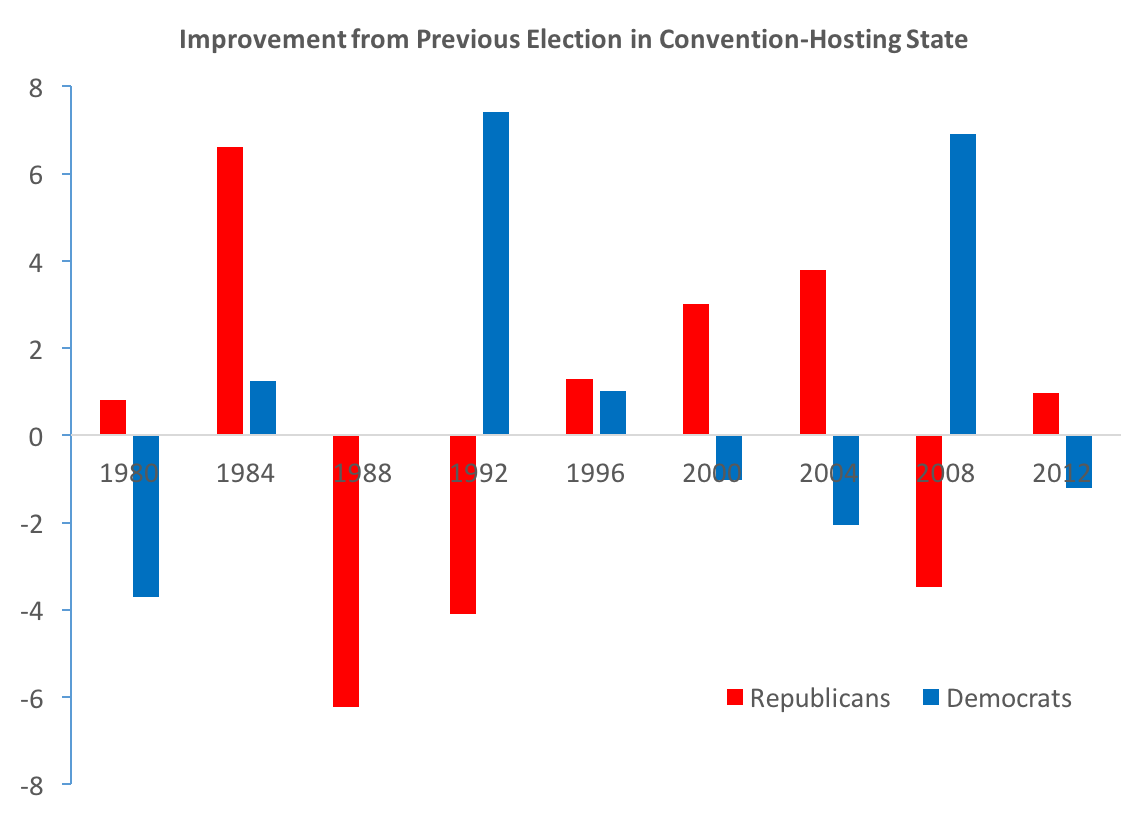Conventions have an economic value for the cities that host them, but they don’t change how residents vote.
By Seth Masket
The third day of the 2008 Democratic National Convention. (Photo: Qqqqqq/Wikimedia Commons)
The 2016 presidential nominating conventions are about to get underway. A great deal of effort, money, and negotiations went into picking Cleveland and Philadelphia as the host cities this year, and it’s no coincidence that the conventions are situated in swing states. Could those location choices help tip a state toward one candidate or another? Probably not.
There’s certainly a credible story for conventions having such an impact. After all, each convention city will play host to thousands of delegates, campaign consultants, elected officials, and party activists. Residents of those cities and states will receive a disproportionate amount of exposure to their guest party and its candidates, and they may even feel a measure of gratitude to them for the attention and the business. This is the sort of thing that could turn a casual observer into an interested voter, and an interested voter into a passionate activist. But does that translate into a November vote boost?
In 1980,the Democrats held their convention in New York, and President Jimmy Carter did about 3.7 points worse there than he did there four years earlier.
To test this, I looked at the state-level Democratic presidential vote in every election since 1980. I coded a “convention” variable that equals 1 if the Democrats held their convention in that state, -1 if the Republicans held it there, and 0 otherwise. And then I controlled for the state’s Democratic presidential vote in the previous election cycle. The result shows that states hosting a convention voted, on average, about three-quarters of a percentage point more for the candidate than other states did given their previous votes, but this estimate has a standard error of 1.4, falling well short of statistical significance. In other words, we can’t distinguish this effect from zero.
You can get a better sense of these convention “effects” by looking at the figure below, which shows how each party did relative to its previous vote share in states holding a convention. If convention location yielded benefits for its guest party, we would expect to see positive numbers for both parties across most years; regardless of how they did nationally, the parties should do a bit better in the states that hosted their conventions. But that’s not what we see.

In 1980, for example, the Democrats held their convention in New York, and President Jimmy Carter did about 3.7 points worse there than he did there four years earlier. The Republicans, meanwhile, held their convention in Michigan, and Ronald Reagan did about 0.8 points better than his party’s previous nominee, President Gerald Ford, did four years earlier. Neither number points to a particularly strong and positive convention effect. We see the same thing across many years. Any convention effect is pretty random and inconsistent from cycle to cycle.
Here’s another way to look at this: 1964 was a very good year for Democrats nationally, and 1968 was pretty even between the two parties. On average, states voted about 10.4 percentage points more Republican in 1968 than they did four years earlier. If convention locations matter, we should expect Illinois to have a much more Republican vote surge in 1968, since it hosted the most notorious Democratic convention of the last century. Yet the Republican vote surge was just 10.6 percentage points — right at the average.
Now, conventions can still yield plenty of benefits for a party. It’s useful to have the national media’s attention focused on a party’s candidates and message for a week, providing important information and building enthusiasm for the party across the country. And there’s certainly commercial value in hosting a convention. But there’s not necessarily a great electoral payoff.

||
*Update—July 12, 2016: I somehow missed that Matthew Atkinson et al. examined county-level election results and did find some effects of convention location at the local level, although those effects are conditional on local political environments.





